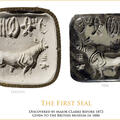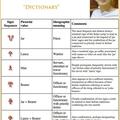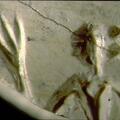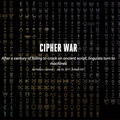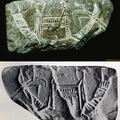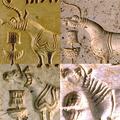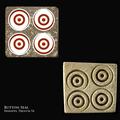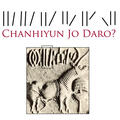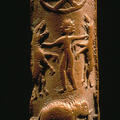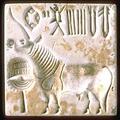The First Seal
The first seal, found at Harappa before 1872. Included in The British Museum's A History of the World in 100 Objects, a nice podcast of the chapter on this black stone unicorn seal is available for free at bbc.co.uk (Episode 16, Indus seal). Sir Alexander Cunningham, who led the first excavations there in 1872-73 and published news of the seal, wrote 50 years before we understood that the Indus civilization had existed: "The most curious object discovered at Harappa is a seal, ... The seal is a smooth black stone without polish.

